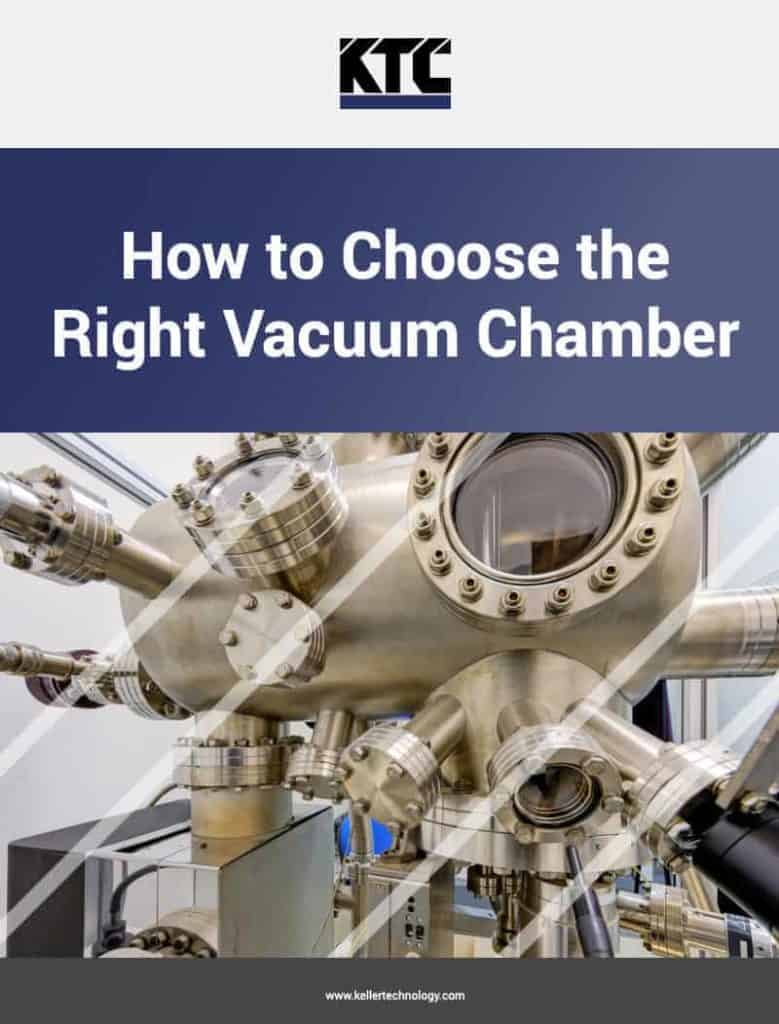Vacuum Chamber Materials and Finishes
The successful manufacture of custom or production vacuum chambers requires deep expertise and broad fabrication capability — and at Keller Technology, you’ll find both.
With extensive experience in machining, welding and finishing a wide variety of vacuum materials, we’re able to produce precision-fabricated custom stainless steel, plated steel and aluminum vacuum chambers for many different industries and applications, using the latest technology.
Vacuum Chamber Materials
Selecting the appropriate materials for a vacuum chamber project is a complex task, but a crucial one for ensuring a successful result. Proper vacuum materials selection must take into account the material’s vacuum performance and manufacturability. For example, while aluminum is easier to machine, it can be more difficult to weld and may not possess the material characteristics required for the application.
In addition to engineering considerations, each material has different advantages. You may be looking for machinability, magnetism or radiation resistance depending on the application. We can advise on manufacturability of your chamber design based on materials and geometry.
At Keller Technology, we specialize in stainless steel, plated steel and aluminum vacuum chambers, which have application in semiconductor process equipment, particle accelerator components, and other research and manufacturing tools.
Aluminum Vacuum Chambers
Aluminum has many of the advantages of stainless steel but is lighter and easier to machine. Instead of welding discrete side plates to fabricate the chamber, we have the equipment necessary to hog- out a single piece unit from a billet, drastically reducing the potential for leaks by eliminating welded joints.
Stainless Steel Vacuum Chambers
Stainless steel is widely used for vacuum chambers thanks to its high strength, thermal stability and cleanliness. A particularly popular choice is 304 stainless steel, which offers lower oxidization than other alloys.
Steel Vacuum Chambers
Steel is not typically utilized for vacuum chambers, as it must be plated for use in high vacuum and ultra-high vacuum applications. In some cases, plated steel is preferred for its magnetic properties.
Vacuum Chamber Finishes
In terms of the different finishes available for custom vacuum chambers, we have the capability and experience to provide a variety of surface finishes. As with vacuum chamber materials, each finishing technique has distinct advantages and limitations.
Bead blasting
Bead blasting is a surface finishing technique that seals and levels the surface, leaving it with a decorative appearance. Bead blasting can be used to prepare a surface for plating.
Hand polishing
Hand polishing is appropriate in some applications that require for the removal of tooling marks and other surface blemishes.
Plating
Adding silver or electroless nickel plating to vacuum chamber components can improve conductivity or decrease outgassing as required.
Of course, tolerances, finishes, and chamber geometry will have an effect on price. Our experienced engineers can help you determine the best finishing method or identify areas for cost savings by reviewing your plans.
Contact us to request a quote or to see how we can help you with your custom vacuum chamber project.
Custom vacuum chambers project profiles
Custom vacuum chambers
Integrated vacuum chamber system
Integrated cylindrical and box type chambers.

